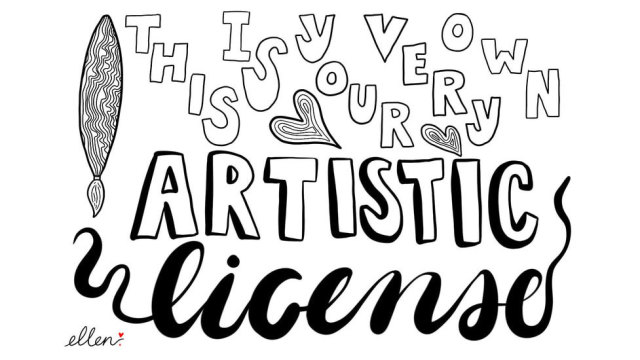Artistic license (alongside more contextually specific derivative terms such as poetic license, historical license, dramatic license, narrative license, and creative license) refers to deviation from fact or form for artistic purposes. It can include alteration of the conventions of grammar or language, or the rewording of pre-existing text.
The artistic license may also refer to the ability of an artist to apply smaller distortions, such as a poet ignoring some of the minor requirements of grammar for poetic effect. For example, Mark Antony's "Friends, Romans, Countrymen, lend me your ears" from Shakespeare's Julius Caesar would technically require the word "and" before "countrymen", but the conjunction "and" is omitted to preserve the rhythm. Conversely, on the next line, the end of "I come to bury Caesar, not to praise him" has an extra syllable because omitting the word "him" would make the sentence unclear, but adding a syllable at the end would not disrupt the meter. Both of these are examples of artistic license.
Another example of artistic license is the way in which stylized images of an object (for instance in a painting or an animated movie) are different from their real life counterparts, but are still intended to be interpreted by the viewer as representing the same thing. This can mean the omission of details, or the simplification of shapes and color shades, even to the point that the image is nothing more than a pictogram. It can also mean the addition of non-existing details, or exaggeration of shapes and colors, as in fantasy art or a caricature.
Certain stylizations have become fixed conventions in art; an agreement between artist and viewer that is understood and undebatable. A striking example is how in simple cartoon drawings' monochromatic white parts on a dark colored surface are immediately recognized by most viewers to represent the reflection of light on a smooth or wet surface.

